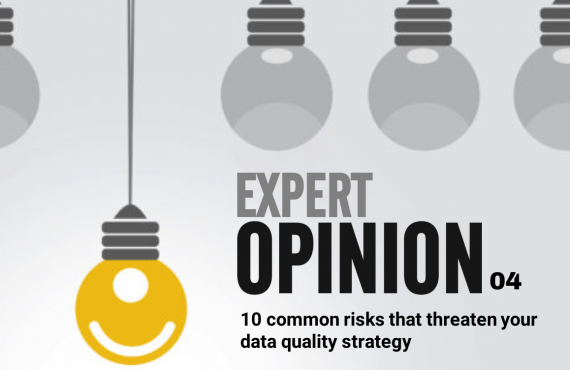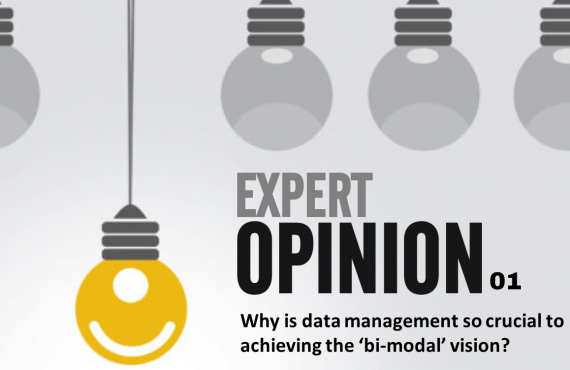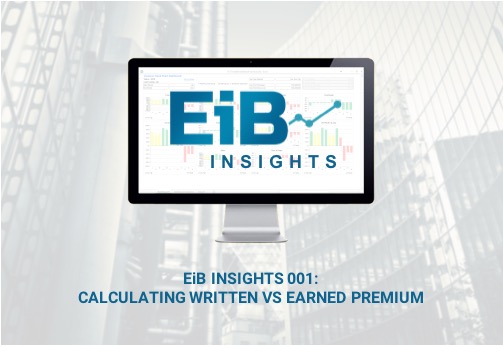Welcome to 2019, a new year, with new challenges, new opportunities and a lot more new data.
For some organisations the prospect of amassing another year’s worth of data is an exciting one, given both the valuable insights and intelligence which this data can provide for improving internal efficiency, selling more products and services, marketing more strategically, building better products, and strengthening customer relationships and loyalty.
But the stark reality for a lot of businesses, is that the majority of their data is not being exploited, their data and analytics are still being managed in silos and any analysis remains ad-hoc, with little if any automation.
In fact, at the end of 2017, Gartner, the world’s leading research and advisory company, conducted a global survey¹ exploring the data and analytics initiatives of 196 organisations. The findings showed that whilst investment into this area had been the number one priority for CIOs in recent years, a resounding 91% of organisations surveyed were still yet to reach a “transformational” level of maturity in their data and analytics.
As a result, these same organisations are struggling to overcome a series of unavoidable barriers in order to increase the value of their data assets, accelerate and expand the use of modern BI capabilities and exploit new analytics technologies. Such barriers include defining a data and analytics strategy, determining how to get value from projects and solving risk and governance issues, all of which result in low data and analytics maturity.

So, whilst there isn’t a silver bullet to mature your data and analytics overnight, Melody Chien, Senior Director Analyst at Gartner, has provided 4 ways to evolve your capabilities in 2019:
1. Develop holistic data and analytics strategies with a clear vision
Organisations with low BI maturity often exhibit a lack of enterprise wide data and analytics strategies with clear vision. Business units undertake data or analytics projects individually, which results in data silos and inconsistent processes.
Data and analytics leaders should coordinate with IT and business leaders to develop a holistic BI strategy. They should also view the strategy as a continuous and dynamic process, so that any future business or environmental changes can be taken into account.
2. Create a flexible organisational structure, exploit analytics resources and implement ongoing analytics training
Enterprises must have people, skills and key structures in place to foster and secure skills and develop capabilities. They must anticipate upcoming needs and ensure the proper skills, roles and organisations exist, are developed, or can be sourced to support the work identified in the data and analytics strategy.
With limited analytics capabilities in-house, data and analytics leaders should strive for a flexible working model by building “virtual BI teams” that include business unit leaders and users.
3. Implement a data governance program
Most organisations with low BI maturity do not have a formal data governance program in place. They may have thought about it and understand the importance of it, but do not know where to start.
Analytics leaders can consider governance as the “rules of the game.” Those rules can support business objectives and also enable the organisation to balance out the opportunities and risks in the digital environment. Governance is also a framework that describes the decision rights and authority models that must be imposed on data and analytics.
4. Create integrated analytics platforms that can support a broad range of uses
Low-maturity organisations often have primitive IT infrastructures. Their BI platforms are more traditional and reporting-centric, embedded in ERP systems, or simple disparate reporting tools that support limited uses.
To improve their analytics maturity, data and analytics leaders should consider integrated analytics platforms that extend their current infrastructure to include modern analytics technologies.
¹IT Score for Data and Analytics. Gartner, 2017
To ensure our clients derive full value from their BI platform, Excel in Business adopt a partnership based approach, coordinating our efforts across three dimensions of people, processes, and technology.
We have found that maintaining such a high-level of engagement and active participation from our clients throughout the process, facilitates their data and analytics transformation across the organisation, and achieves maximum ROI from our EiB Analytics solution in a relatively quick timescale.








